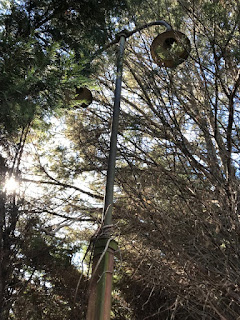 One of the most fun aspects of the investigations I do here is the fact that none of them are ever really
One of the most fun aspects of the investigations I do here is the fact that none of them are ever reallydone. For better or worse, there are always more questions to answer and more mysteries to ponder. A regular part of the process involves sometimes going back and adding new information or some additional thoughts, whether it be a few days later or six years later. Here we've got a little of each, plus a technical addition that may or may not be of interest. Either way, I wanted to make sure you were aware of it all.
The first addition was to a very recent post, the one about the Benevolent Order of the Sons and Daughters of Harrison Smith. About a day or so after posting this story, some new information about Harrison Smith was brought to my attention that got me thinking a bit more about him, and his relationship to the group or groups. I also thought a little more about the timing of various events. These musings can be found at the end of the original post, which can be found here. If you read the post when it was first published, go back and check out the additional thoughts I added on.
Sometimes updates happen pretty quickly, and sometimes they don't. The next update was made this week, to a post originally published over six years ago. The story was about William L. Edison, the son of inventor Thomas Edison. I had found newspaper ads stating that the younger Edison had lived near Greenbank and had operated a car dealership, either there or someplace else. There wasn't a whole lot more info, and I didn't even know exactly where near Greenbank Edison had lived. Well, after going back and looking some more (with more access now), I think I've determined where Edison resided for a short time in 1907. The post has more information at the end, but the short answer is a property on the west side of Greenbank Road, just below Newport Gap Pike. The house there now may or may not be the same one standing in 1907, I'm not sure. I'm also pretty sure that his business office was in the city, in a building you may be familiar with today. You can find the original post, with the new information (and maps!), here.
The final update concerns a new box you may or may not have noticed over to the right. At a reader's request, I have added a field to enter your email address if you'd like to be notified of new posts. I tried this out on myself first and, yes, it does send one email if there is a new post. To be honest, the email actually includes the full post. It does not send anything on days when there are no new posts, which of course is most days. So, your inbox won't be inundated with emails. I do plan on posting more regularly this year than last, so maybe this will help you keep up.


